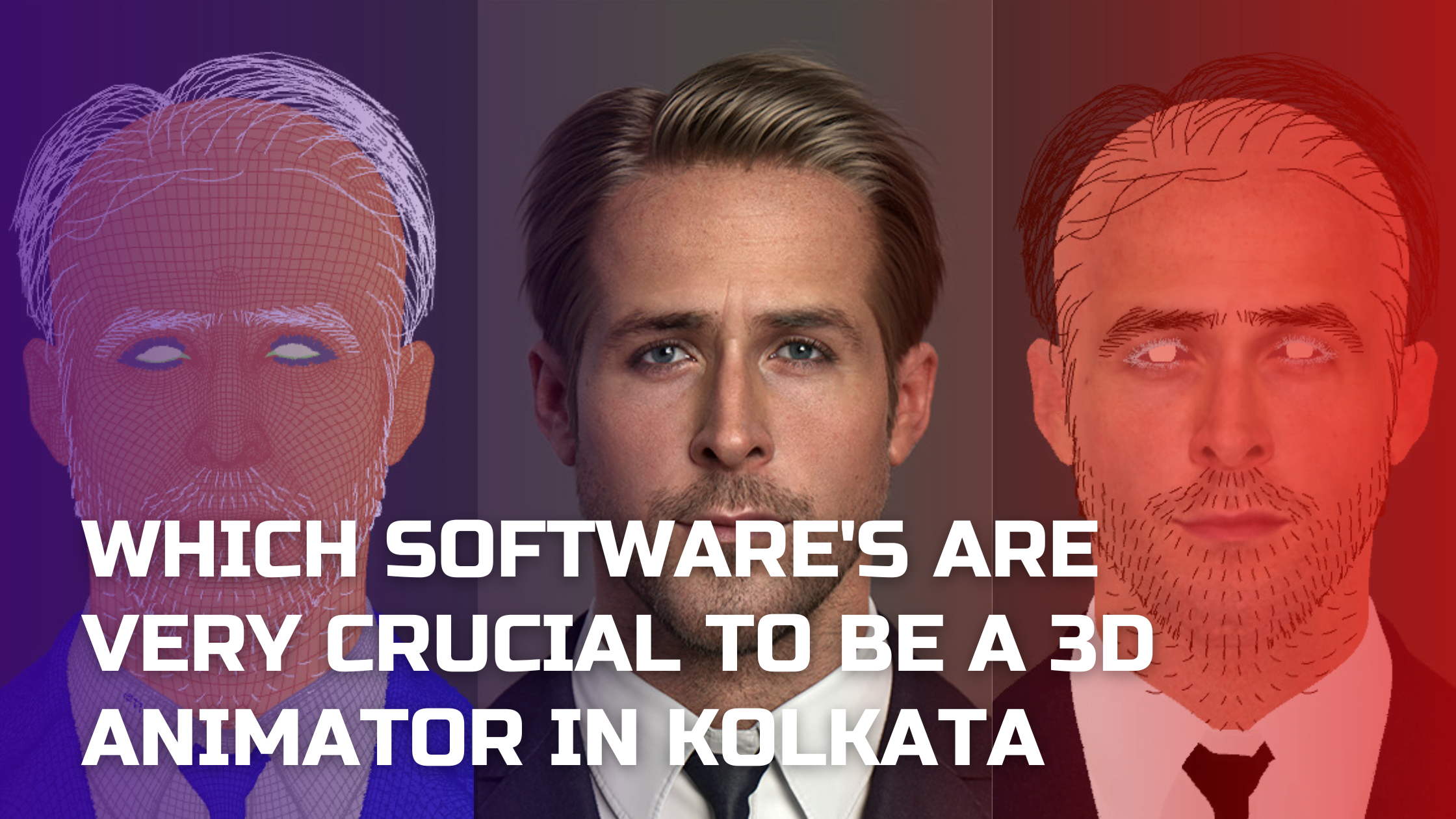3D animation is one of the most rewarding jobs in this field of multimedia. But to get that reward, you have to muster the industry-level skills. A 3D artist must learn some software like Autodesk Maya, Blender, Photoshop, Premierepro etc.
Use of 3D Animation Software:
1) Autodesk Maya:
i) Intuitive Interface and Workflow:
Maya boasts an intuitive user interface, making it accessible for beginners and seasoned animators. Its workflow is designed to streamline the animation process, allowing artists to focus on their creative vision rather than grappling with complex tools.
ii) Robust Modeling Capabilities:
One of Maya’s strengths lies in its robust modeling toolkit. From basic shapes to intricate character models, Maya provides a diverse set of tools for 3D modeling. The software’s versatility makes it a go-to choice for artists engaged in character design, environment modeling, and more.
iii) Dynamic Animation Tools:
Maya excels in animation with a comprehensive set of tools for character rigging, keyframing, and dynamics. The software’s animation features, including the Graph Editor for fine-tuning curves, empower animators to breathe life into their creations with fluid and realistic movements.
iv) Advanced Lighting and Rendering:
Maya’s rendering capabilities are second to none. The software supports advanced lighting techniques, including global illumination and ray tracing, allowing animators to create visually stunning and realistic scenes. The Arnold renderer, integrated with Maya, further elevates the quality of rendered output.
v) Fluid Simulation and Dynamics:
Maya’s dynamics and simulation tools enable the creation of realistic effects such as fluid simulations, cloth dynamics, and particle systems. This opens up possibilities for animators to craft dynamic and visually captivating animations.
vi) Extensive Community and Resources:
Autodesk Maya boasts a vast user community and a wealth of online resources. Tutorials, forums, and documentation make accessing support and enhancing their skills easier for learners. The collaborative nature of the Maya community fosters a culture of shared knowledge and continuous improvement.
vii) Industry Standard and Integration:
Maya has established itself as an industry-standard in 3D animation and visual effects. Many studios and professionals worldwide rely on Maya for its robust features and seamless integration with other Autodesk products like Mudbox and MotionBuilder.
2) Adobe Photoshop:
i) Creation of Concept Art and Storyboarding:
Before the 3D animation process begins, conceptualization and storyboarding are essential steps. Photoshop serves as a canvas for artists to unleash their creativity, enabling the creation of concept art and storyboards. Skipping and refining ideas directly in Photoshop facilitates a seamless transition from concept to execution.
ii) Texture Mapping and UV Unwrapping:
Adobe Photoshop is an invaluable tool for artists engaged in texture mapping and UV unwrapping. The software’s robust set of painting and texturing features allows animators to create intricate and realistic textures for 3D models, enhancing the visual appeal of characters, environments, and objects within the Animation.
iii) Creation of Matte Paintings:
Matte’s paintings are crucial in establishing breathtaking backgrounds and environments in 3D animation. Photoshop’s ability to composite and manipulate images makes it ideal for creating stunning matte paintings seamlessly integrating with 3D scenes.
iv) Layer-Based Workflow for Flexibility:
The layer-based workflow in Photoshop aligns seamlessly with the principles of 3D Animation. Artists can work on different project elements in separate layers, allowing for non-destructive editing, easy adjustments, and the flexibility to experiment with various visual elements.
v) Creation of Textures for 3D Animation:
Photoshop’s prowess in creating detailed and high-resolution textures is paramount in 3D Animation. Animators can design intricate pattern apps and use realistic surface details and fine-tune textures precisely, ensuring the final 3D render is visually captivating.
vi) Integration with 3D Software:
Adobe Photoshop seamlessly integrates with popular 3D animation software, enabling a smooth workflow. Animators can directly paint on 3D models, manipulate textures, and see real-time updates, fostering a cohesive and efficient pipeline.
vii) Extensive Brush and Painting Tools:
Photoshop’s extensive collection of brushes and painting tools empowers animators to bring their creative visions to life. Whether it’s adding fine details, creating custom brushes for specific effects, or achieving stylized looks, the painting capabilities of Photoshop are instrumental in shaping the visual narrative of a 3D animation.
3) Adobe Premiere Pro:
i) Efficient Editing Workflow:
Premiere Pro‘s intuitive and efficient editing interface streamlines the post-production process for 3D animations. Animators can seamlessly import rendered sequences, arrange clips, and fine-tune the timing to create a polished and cohesive final product.
ii) Dynamic Timeline for Storytelling:
The dynamic timeline in Premiere Pro allows animators to craft compelling narratives by arranging scenes, adjusting pacing, and integrating visual and auditory elements. This flexibility is crucial for bringing together various components of a 3D animation into a seamless and engaging story.
iii) Integration with Adobe Creative Cloud:
Premiere Pro seamlessly integrates with other Adobe Creative Cloud applications, including After Effects and Photoshop. This interconnected ecosystem enables animators to enhance their 3D animations with dynamic visual effects, polished graphics, and refined post-production touches.
iv) Audio Enhancement and Synchronization:
The robust audio editing tools in Premiere Pro empower animators to fine-tune soundscapes, synchronize audio with visuals, and create a captivating auditory experience. The software’s audio features contribute significantly to the immersive nature of 3D animated projects.
v) Colour Correction and Grading:
Premiere Pro’s advanced colour correction and grading tools add a professional touch to 3D animations. Animators can ensure visual consistency, enhance mood, and create visually stunning sequences by manipulating colours and tones directly within the software.
4) Adobe Substance 3D:
i) Next-Level Material Authoring:
Substance 3D brings a revolutionary approach to material authoring, allowing animators to create intricate and realistic textures with unprecedented control. The Software’s node-based workflow empowers users to craft materials that respond dynamically to light and environmental changes, enhancing the overall visual fidelity of 3D scenes.
ii) Procedural Texturing for Efficiency:
The procedural texturing capabilities of Substance 3D enable animators to generate complex textures algorithmically. This enhances efficiency in the texture creation process and facilitates the creation of highly detailed and realistic surfaces, from weathered metals to organic materials.
iii) Intelligent Materials and 3D Painting:
Substance 3D introduces the concept of “Smart Materials,” pre-configured materials that adapt intelligently to the geometry of 3D models. Combined with the Software’s 3D painting capabilities, this allows artists to apply and manipulate materials directly onto their models precisely and efficiently.
iv) Real-Time Rendering and Iteration:
The real-time rendering capabilities of Substance 3D provide instant feedback, allowing animators to visualize changes in materials and textures instantly. This iterative workflow enhances the creative process, enabling artists to experiment and refine their designs rapidly.
v) Seamless Integration with 3D Software:
Substance 3D seamlessly integrates with popular 3D animation software, creating a cohesive pipeline for artists. Animators can easily export their textured models to applications like Autodesk Maya or Blender, ensuring a smooth transition from material creation to final animation.





